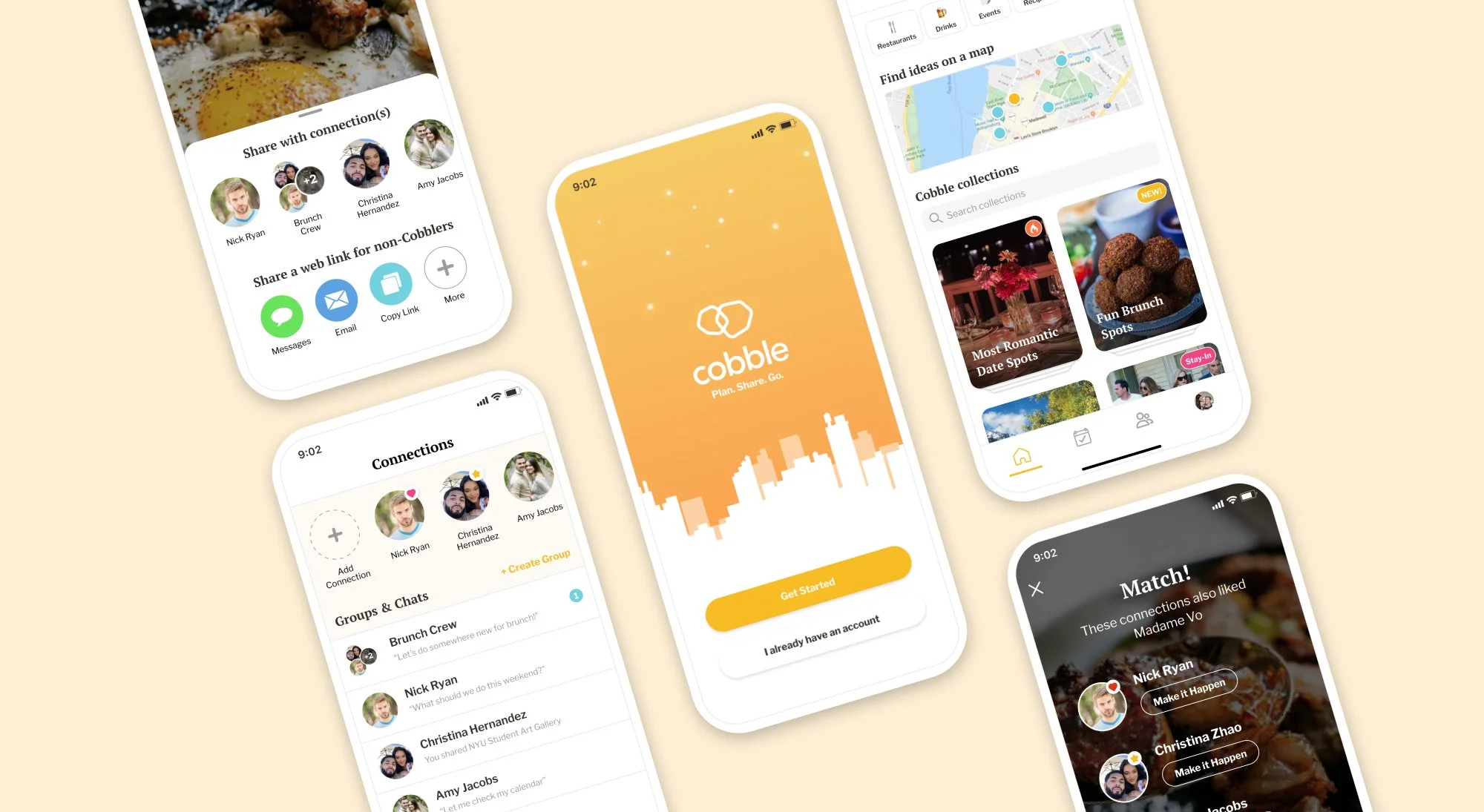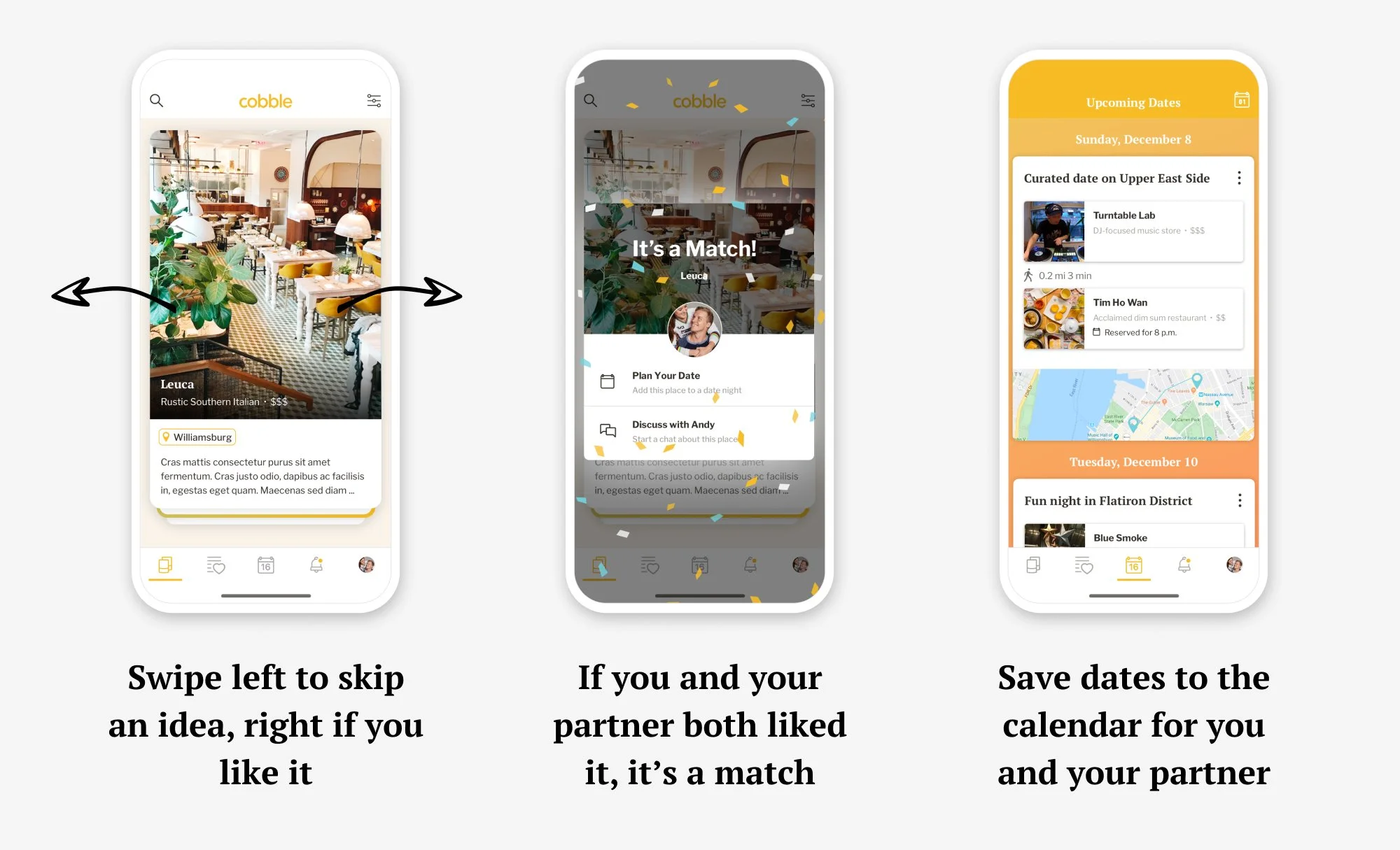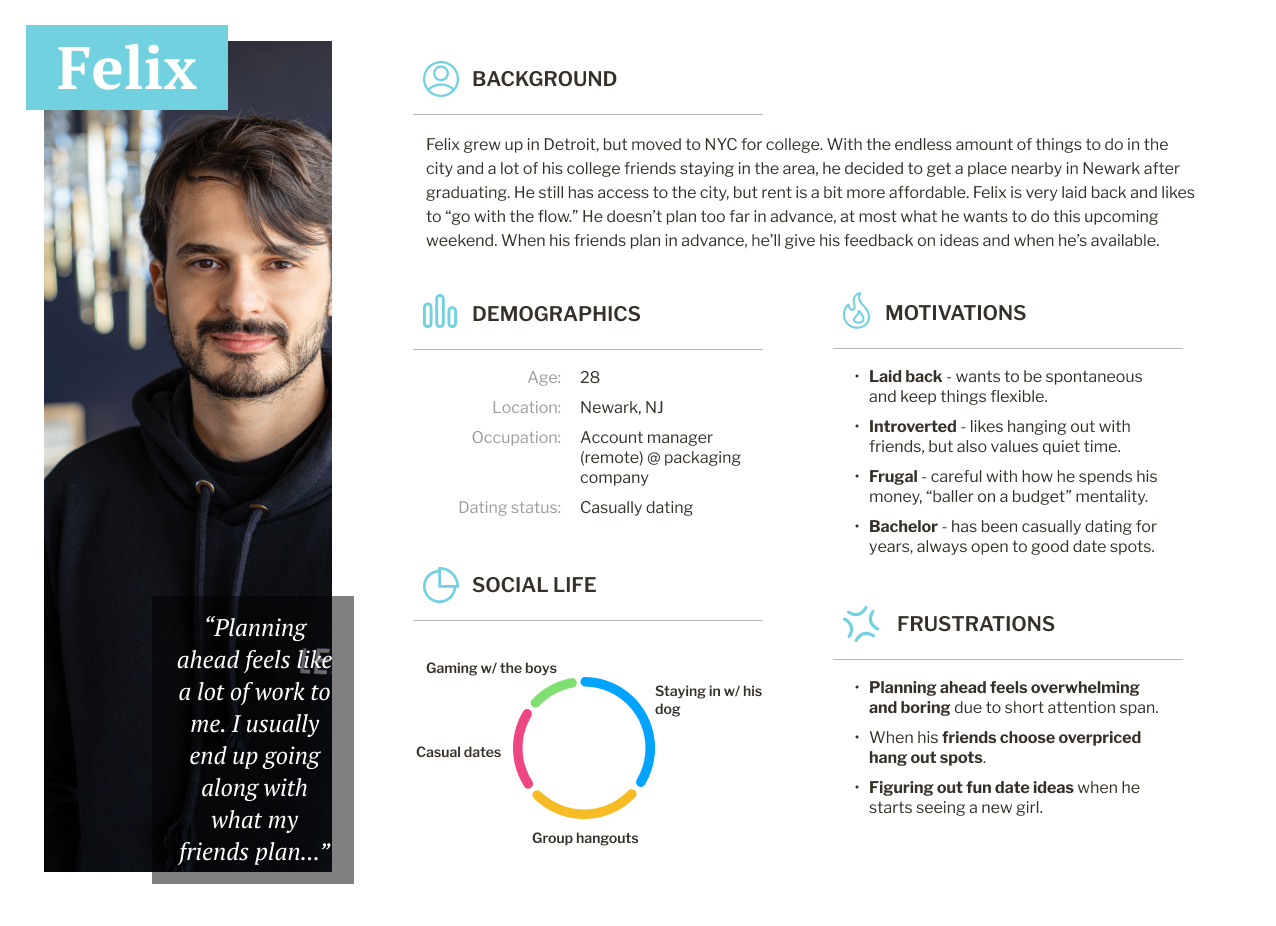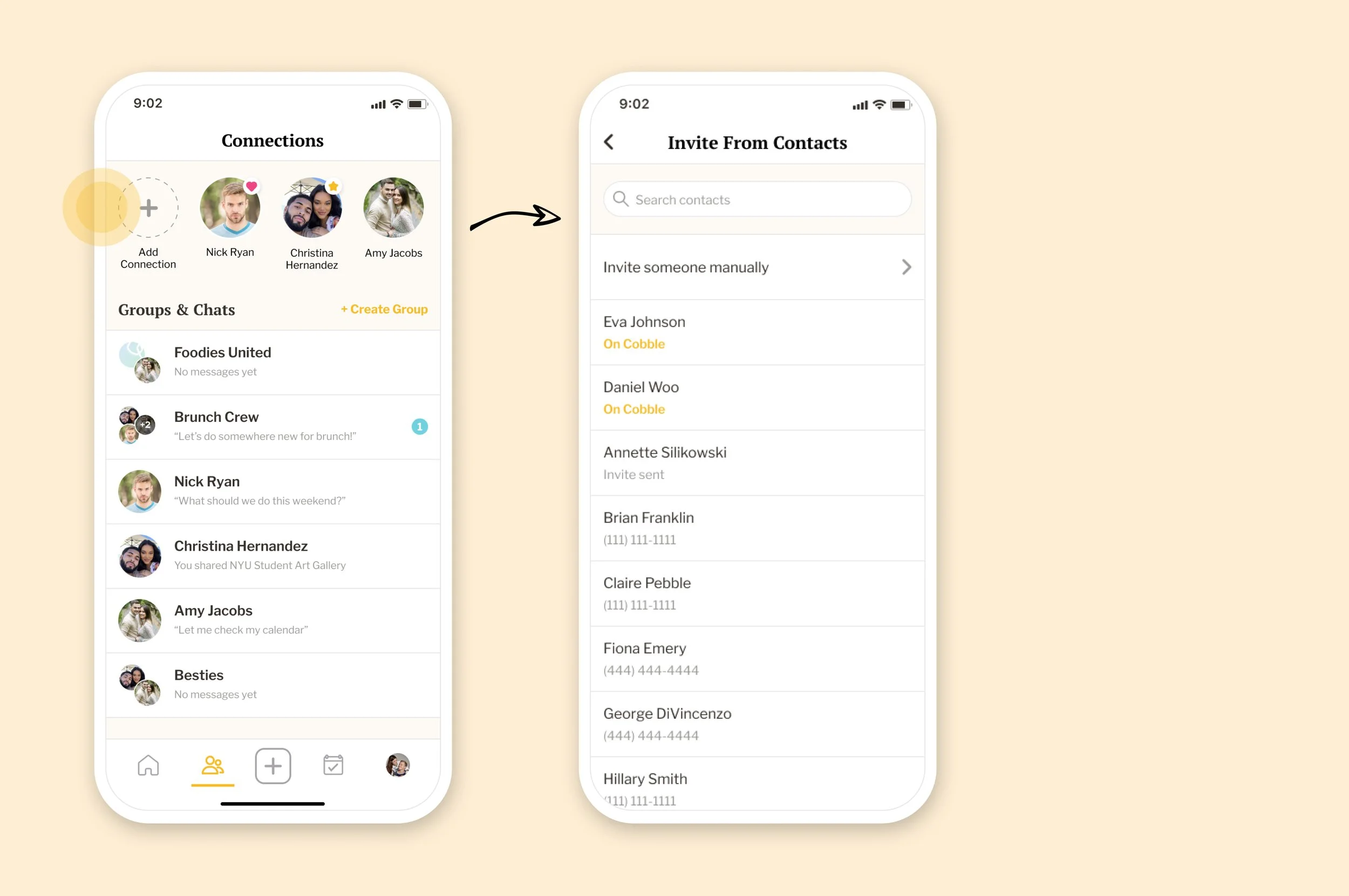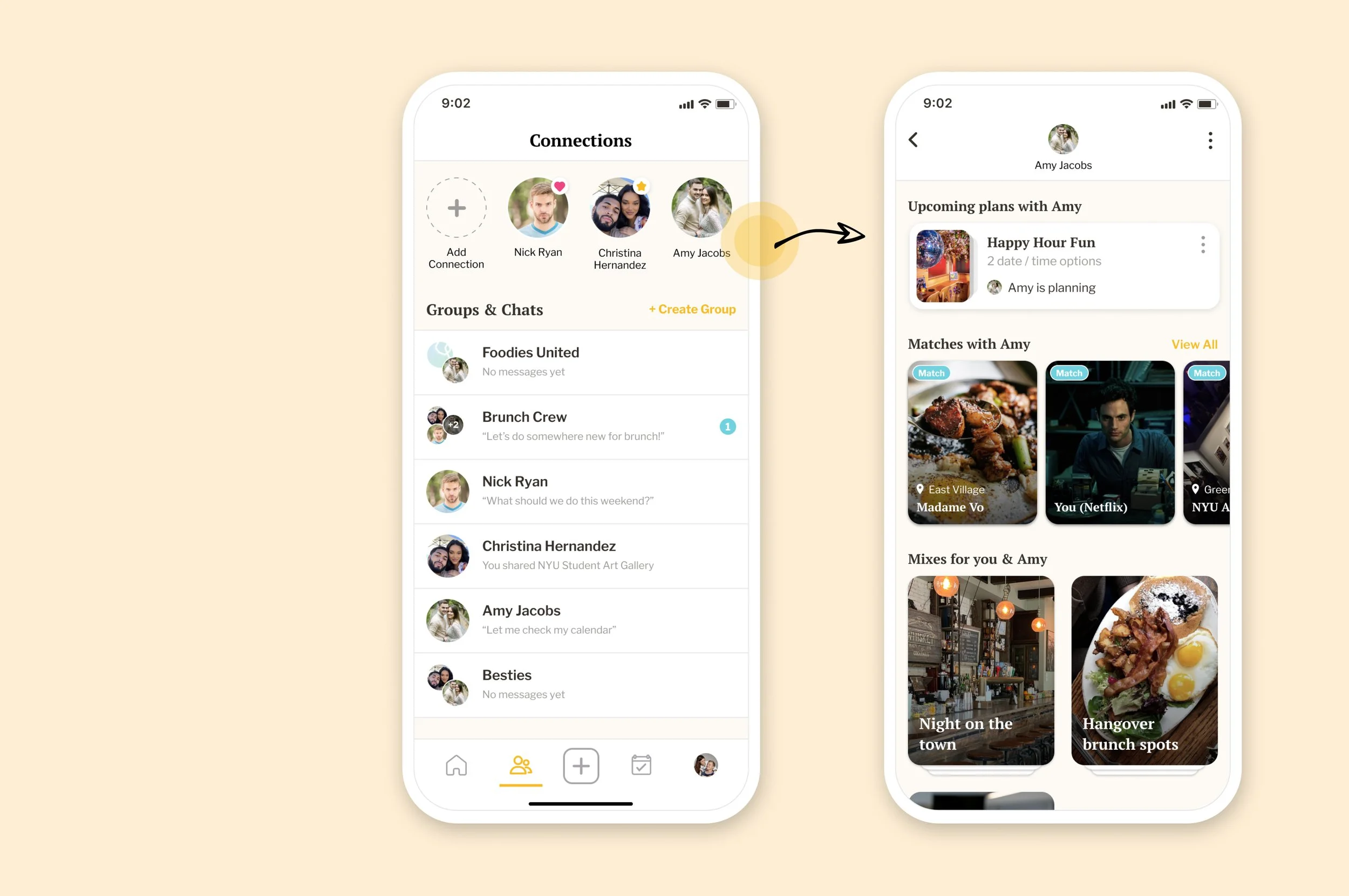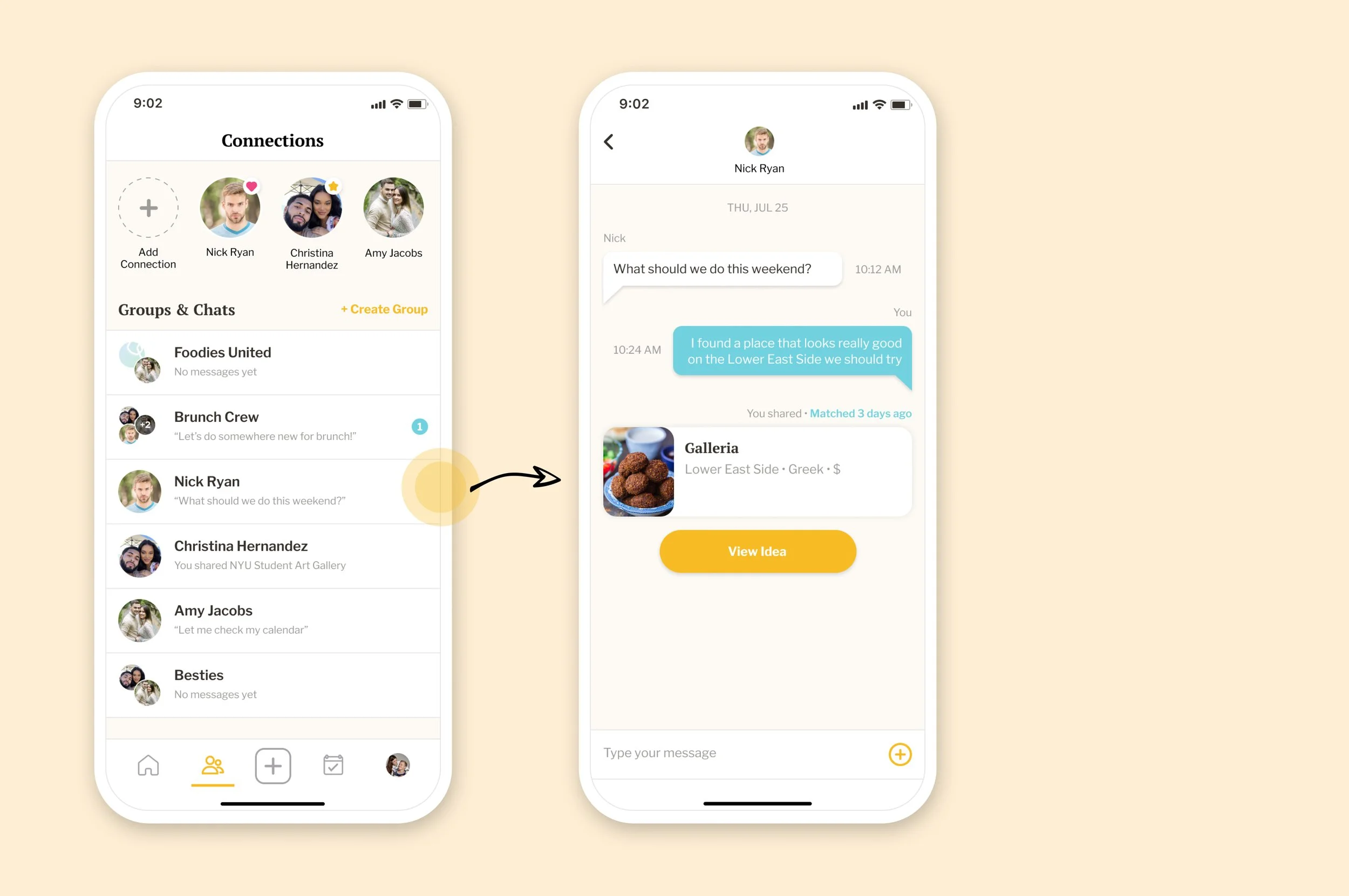Cobble v2
A series of updates to the initial UX with the goal of expanding use cases
The product at launch - Scope and limitations
The problem Cobble was trying to solve at launch was simple — help couples in cities answer the question “What do you want to do tonight?” This is a common problem for couples after the “honeymoon” phase, when you start to run out of ideas for fun and novel things to do together. Cobble’s solution was to provide an interface similar to Tinder, swiping left and right on cards, but instead of swiping on people, you’re swiping on date ideas. These were ideas curated by an in-house content team, spanning from restaurants to bars to outdoor events.
The main user journey for v1 of Cobble
This initial version of the product worked well for the intended use case, with users swiping on cards frequently and a large percentage of users connecting with their partners. However, the potential user base for this feature set didn’t have much head room for growth: the content (being curated) was limited to New York City, the app was only available on iOS, and the primary use case was for people in relationships. In order to expand the addressable market, we had to extend the use cases for the app beyond just couples planning date night. This also meant changing the type of users we’d be building for. With a combination of demographic data and user interviews, I was able to create two personas that captured the main archetypes for the users we’d build for.
Bri represents the “planner” type, someone who likes to plan ahead, stay organized, and use their time well. We found that friend groups almost universally have at least one of these planner types and they’re the ones initiating plans and getting everyone on the same page. This planner type makes up a large majority of the initial Cobble user base, as they’re always proactive in finding planning tools.
Felix represents the other members of the group, or the “passive” type. These are people who find planning boring or tedious, but will participate in other peoples’ plans when asked. They’ll take on the role of planner only if circumstances force their hand. While this type makes up a minority of initial Cobble users, it makes up a majority of people in general, meaning if Cobble could make planning appealing to this type, a much larger user base would be unlocked.
With these personas in mind, we planned and iterated several updates and additions to Cobble’s original feature set.
Discovery - How users find ideas
The launch version of the app featured a single swiping deck where the user saw ideas one at a time. This would often lead to sessions where the only interaction made by the user was a bunch of aimless swipes and then closing the app. One goal with v2 was to make idea discovery more purposeful and multifaceted, where the user could find particular ideas more easily as well as give Cobble a landing spot for reengagement.
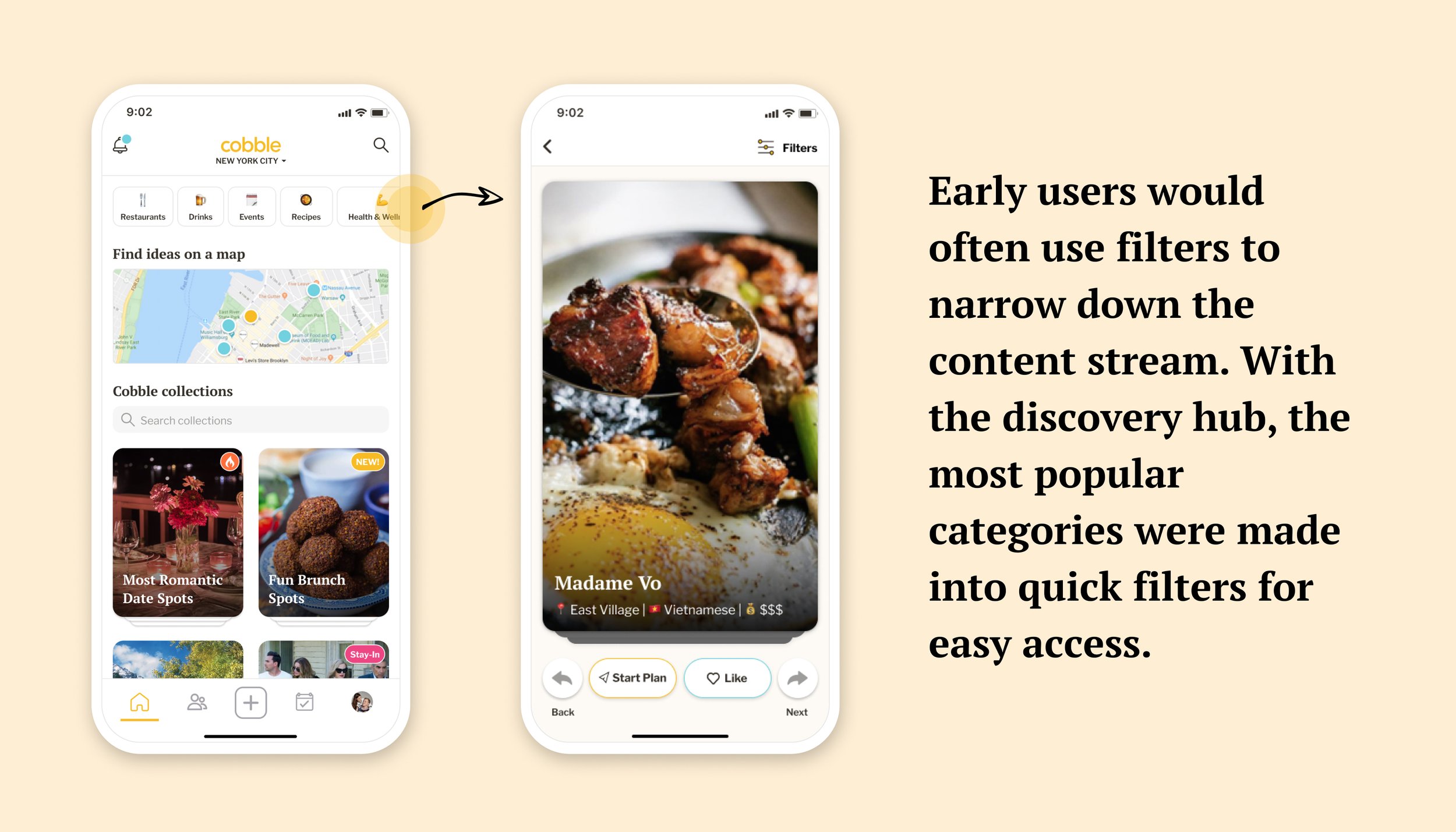
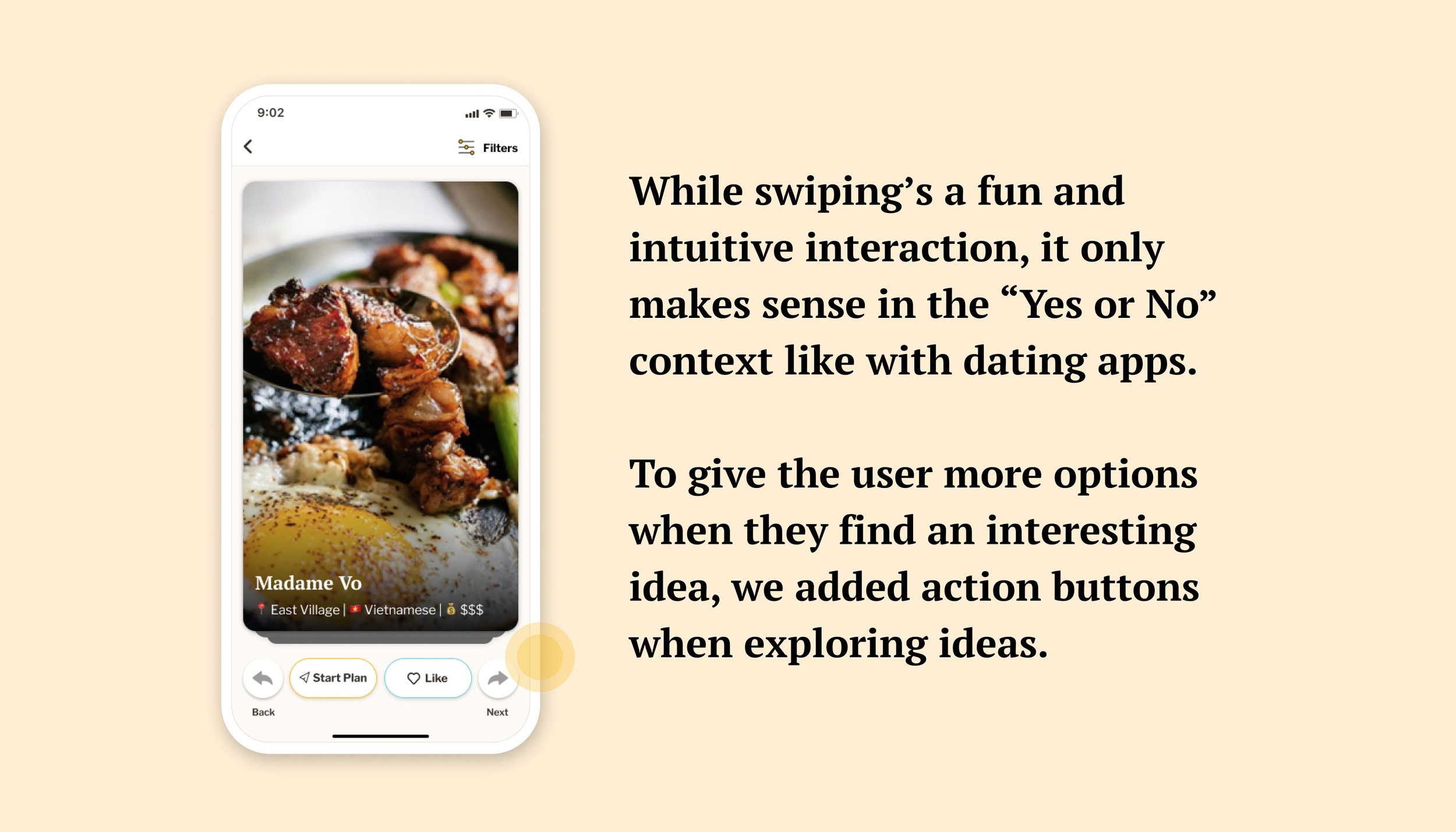
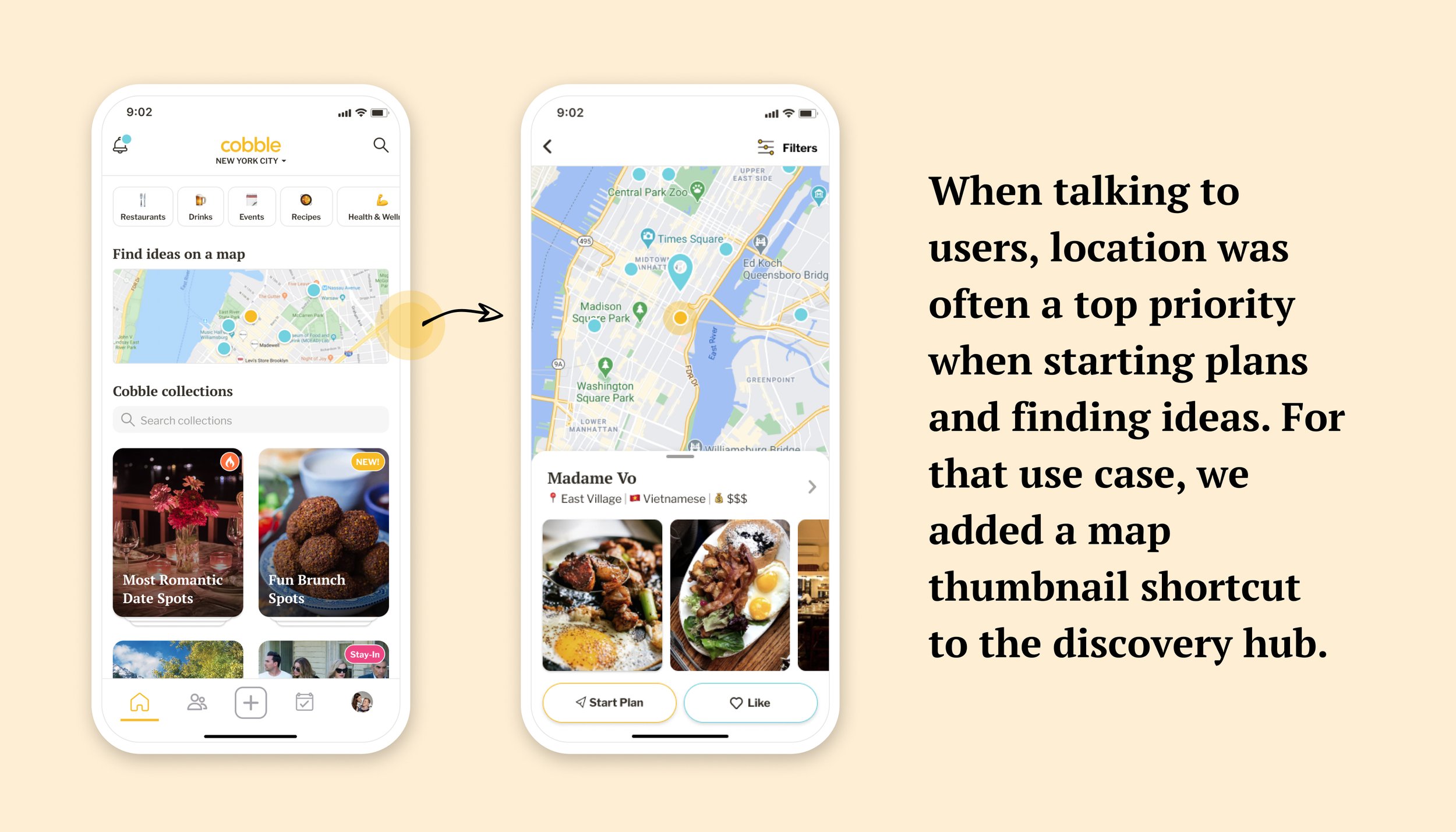
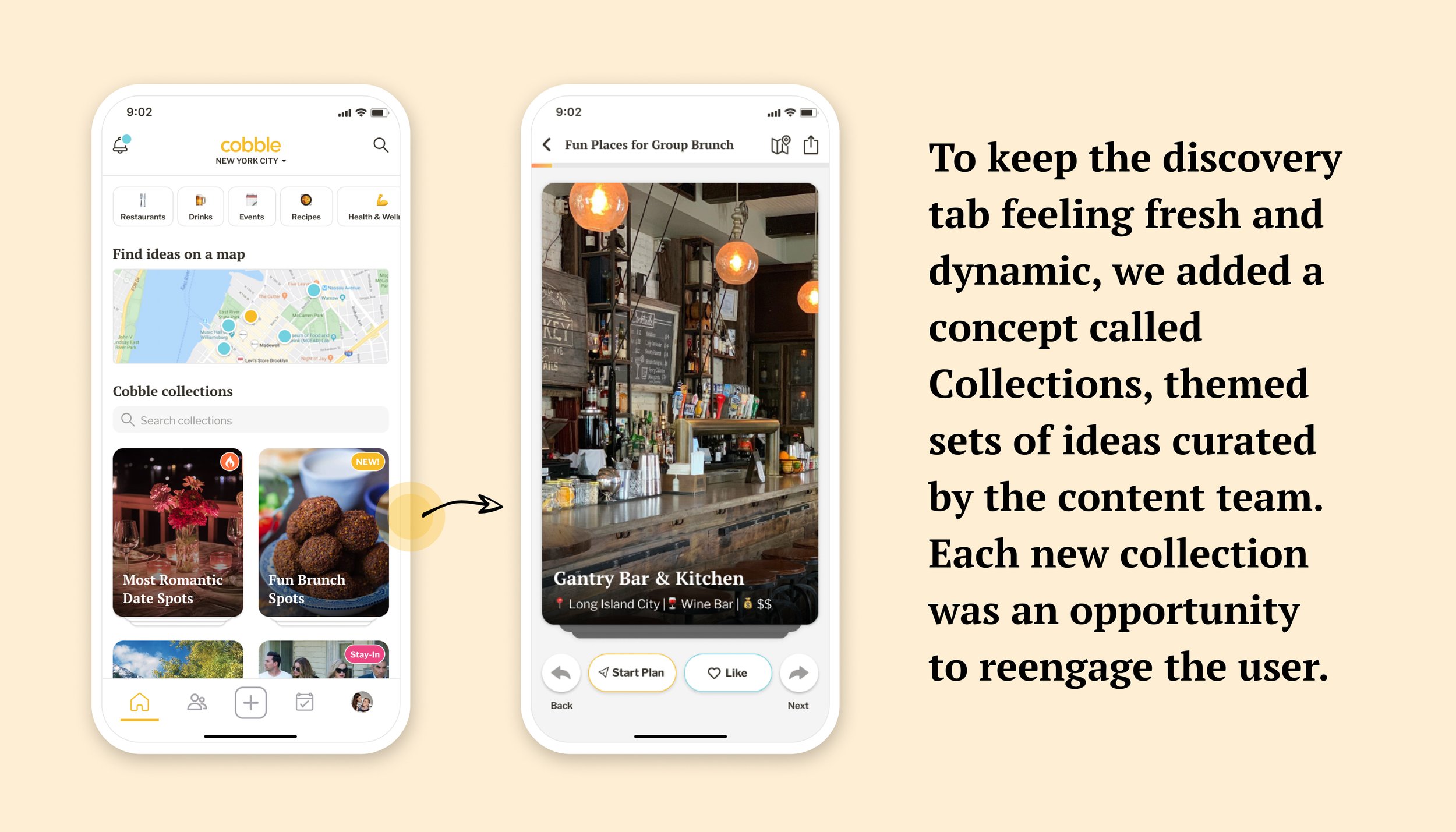
Connections - Matches and plans with anyone you want, not just your partner
Something v1 of the app proved was an appetite for users to connect with their significant others to match on things to do. With v2, the question became if this appetite applied to other types of relationships, like close friends or family members. We had already received individual requests for the idea, so for v2 of the app, it made sense to take an already successful feature and broaden it to all types of relationships: a feature called Connections.
Easy invitations
To have a chance at wide adoption, it had to be easy for users to send connection invitations. If users allowed access to their contacts, connecting with someone was a few buttons presses away.
For users who prefer privacy over convenience, we still allowed for manual invitations, where the user would have to enter phone numbers manually to send invitations.
Smart recommendations
Once you’re connected with someone, you can view the connection to see upcoming plans with that person, any matches from discovery, as well as custom “mixes” of ideas recommended by Cobble.
Streamlined planning
A lot of planning is about sharing ideas and communicating. Through connections, users could easily share ideas and entire plans to get the conversation started.
Polls - A use case for group planning
With matching, the planning flow is made easier since it shortcuts two users to knowing they’re both interested in an idea. However, this dynamic doesn’t work as well beyond two people. To extend the use case to plans that involve groups, we decided to add a polling feature to Cobble, where users could collect ideas for a plan and then share them with friends for responses.
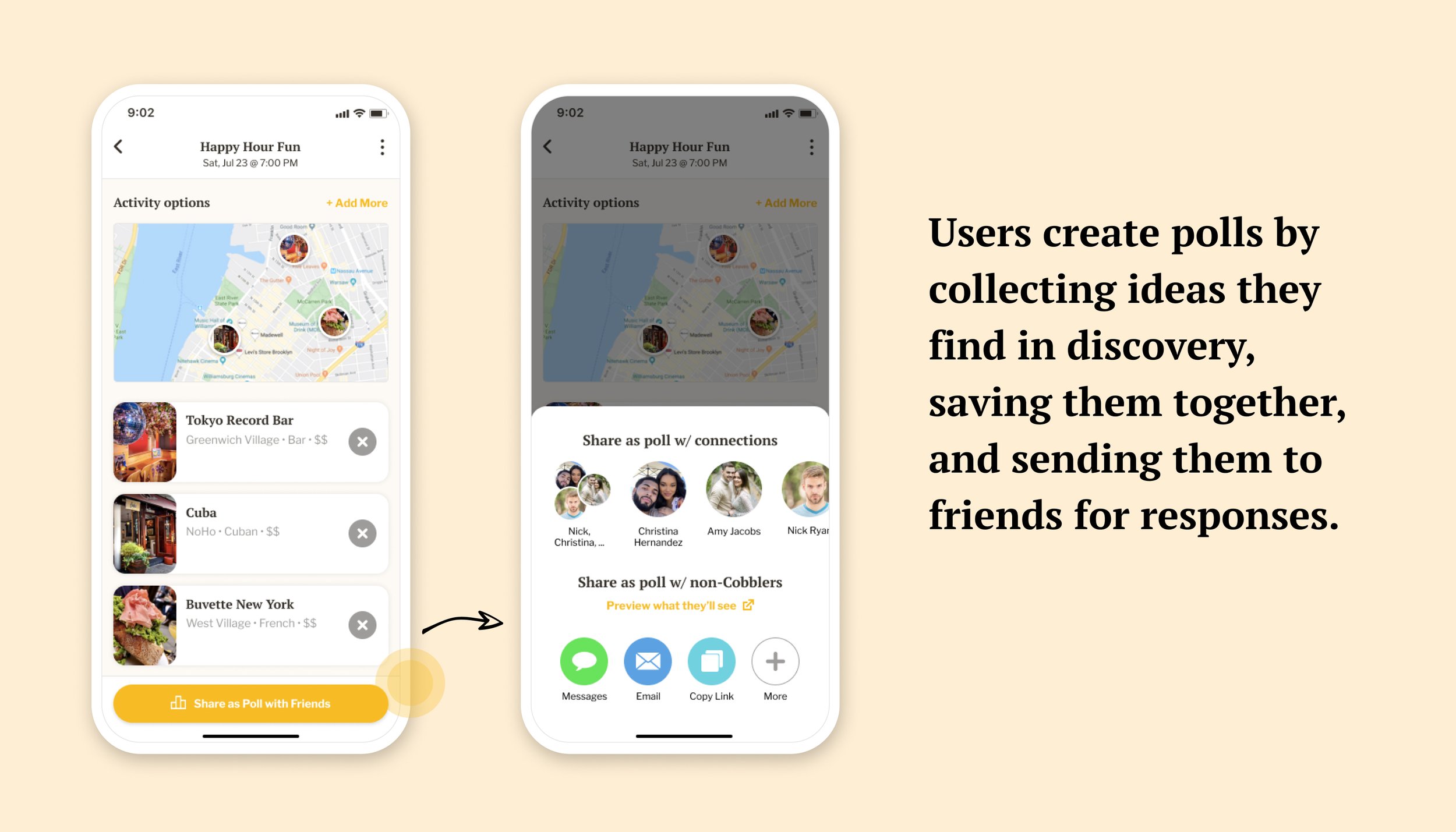
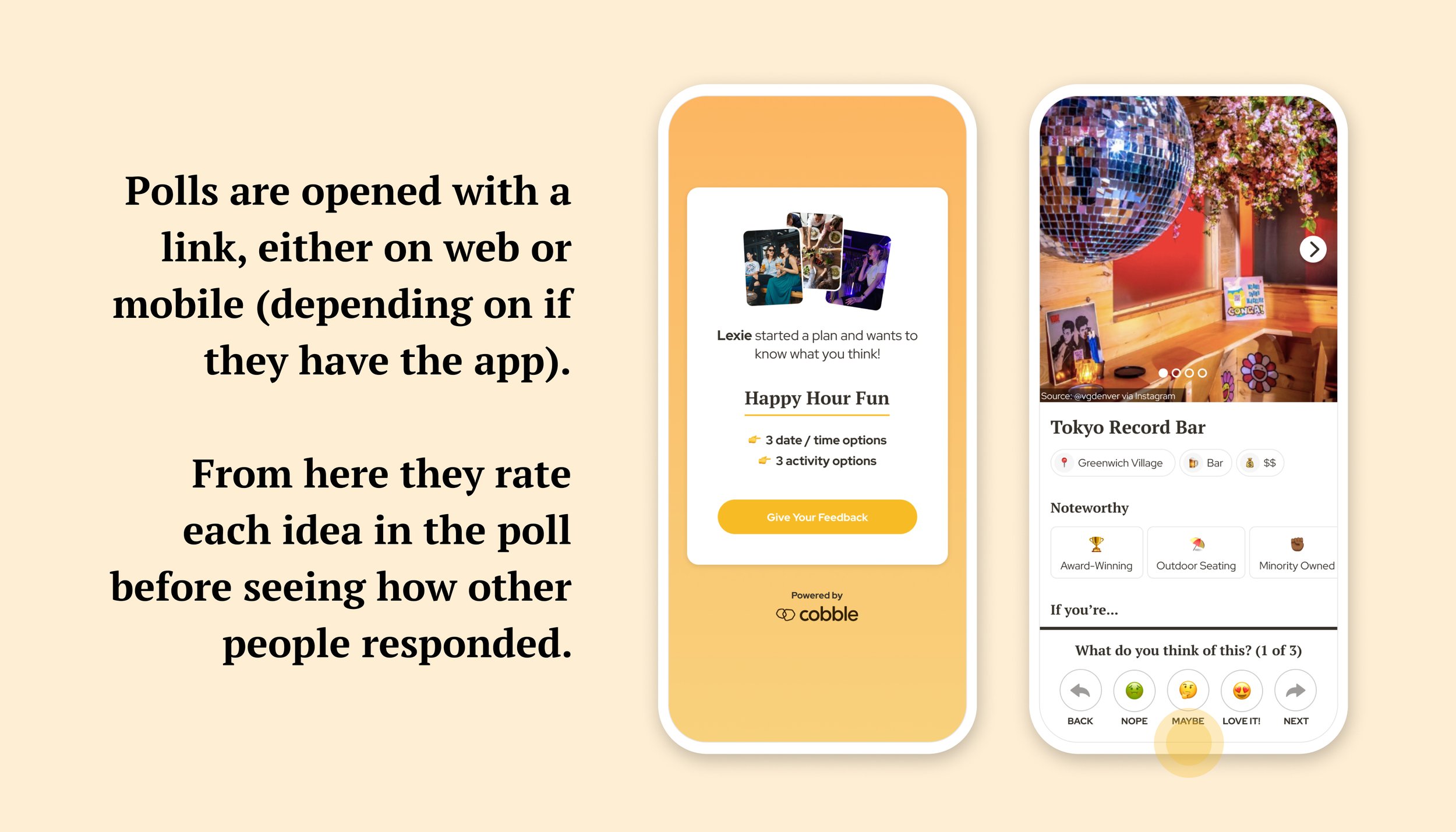
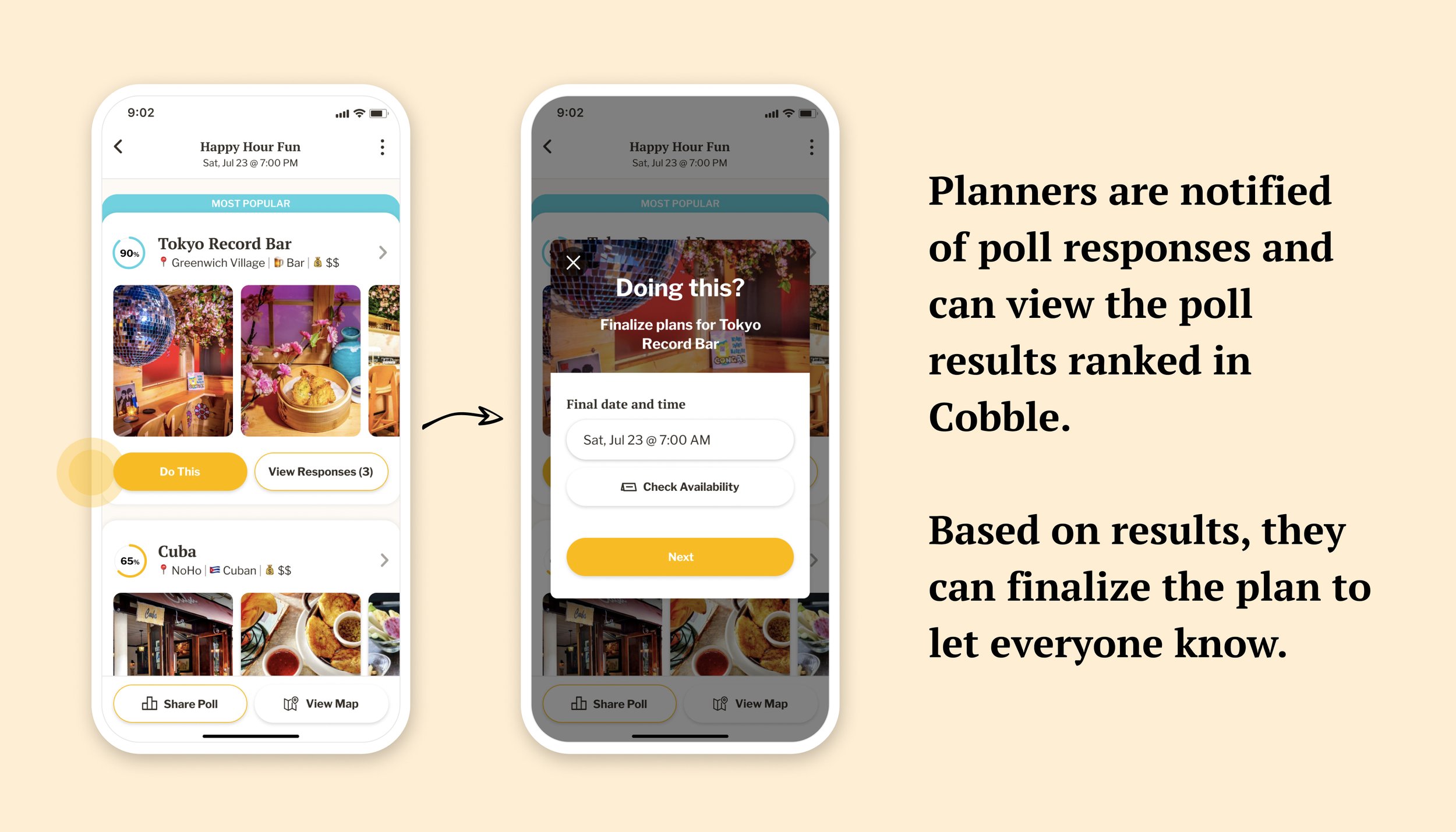
Releasing v2
All of the features explained in this case study were released individually and iterated on separately. Likewise, each update and feature experienced varying degrees of engagement. For example, Collections proved to be extremely popular not only in reengagement, but for users discovering content in general (in user interviews, most users gravitated to collections when prompted to find ideas). On the other hand, Polls and planning in general did not experience the same level of engagement for various reasons. These reasons, and what the product team did to address them, are covered in the next case study.

